Azure Messaging & Event Driven Architecture – A Quickstart Guide
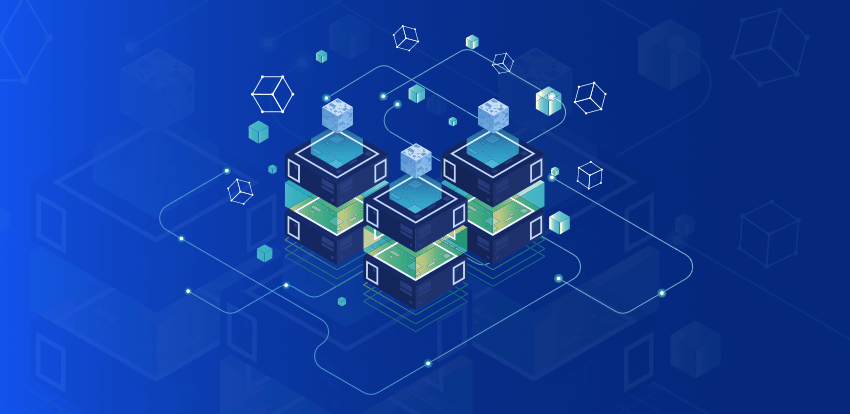
The distributed nature of cloud applications requires a messaging infrastructure that connects the components and services, ideally in a loosely coupled manner in order to maximize scalability. In this article let’s explore the asynchronous messaging options in Azure.
At an architectural level, a message is a datagram created by an entity (producer), to distribute information so that other entities (consumers) can be aware and act accordingly. The producer and the consumer can communicate directly or optionally through an intermediary entity (message broker).

Messages can be classified into two main categories. If the producer expects an action from the consumer, that message is a command. If the message informs the consumer that an action has taken place, then the message is an event.
Commands
The producer sends a command with the intent that the consumer(s) will perform an operation within the scope of a business transaction.
A command is a high-value message and must be delivered at least once. If a command is lost, the entire business transaction might fail. Also, a command shouldn’t be processed more than once. Doing so might cause an erroneous transaction. A customer might get duplicate orders or billed twice.
Commands are often used to manage the workflow of a multistep business transaction. Depending on the business logic, the producer may expect the consumer to acknowledge the message and report the results of the operation. Based on that result, the producer may choose an appropriate course of action.
Events
An event is a type of message that a producer raises to announce facts.
The producer (known as the publisher in this context) has no expectations that the events will result in any action.
Interested consumer(s), can subscribe, listen for events, and take actions depending on their consumption scenario. Events can have multiple subscribers or no subscribers at all. Two different subscribers can react to an event with different actions and not be aware of one another.
The producer and consumer are loosely coupled and managed independently. The consumer isn’t expected to acknowledge the event back to the producer. A consumer that is no longer interested in the events, can unsubscribe. The consumer is removed from the pipeline without affecting the producer or the overall functionality of the system.
There are two categories of events:
- The producer raises events to announce discrete facts. A common use case is event notification. For example, Azure Resource Manager raises events when it creates, modifies, or deletes resources. A subscriber of those events could be a Logic App that sends alert emails.
- The producer raises related events in a sequence, or a stream of events, over a period of time. Typically, a stream is consumed for statistical evaluation. The evaluation can be done within a temporal window or as events arrive. Telemetry is a common use case, for example, health and load monitoring of a system. Another case is event streaming from IoT devices.
A common pattern for implementing event messaging is the Publisher-Subscriber pattern.
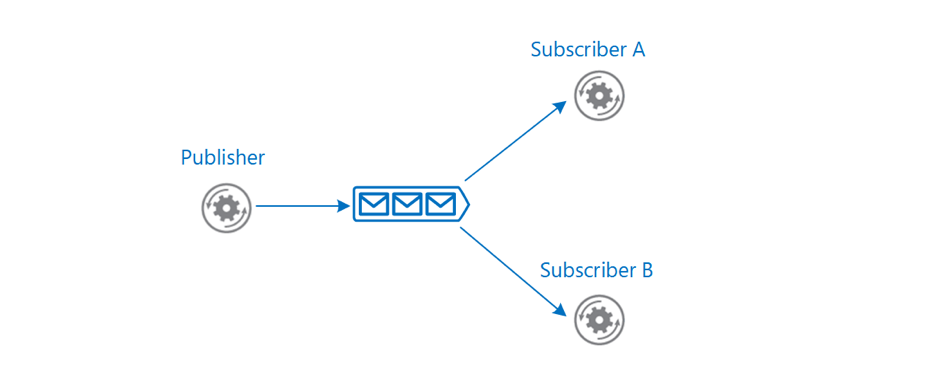
Role and benefits of a message broker
An intermediate message broker provides the functionality of moving messages from producer to consumer and can offer additional benefits.
Decoupling
A message broker decouples the producer from the consumer in the logic that generates and uses the messages, respectively. In a complex workflow, the broker can encourage business operations to be decoupled and help coordinate the workflow.
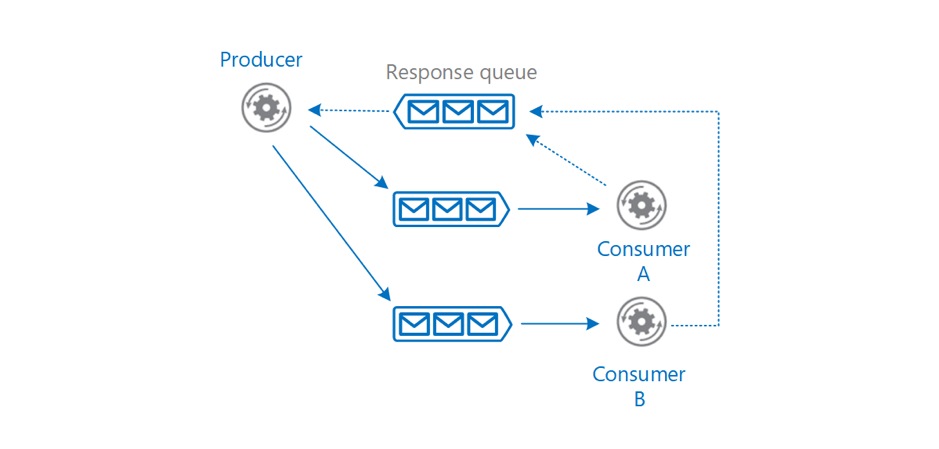
Load balancing
Producers may post a large number of messages that are serviced by many consumers. Use a message broker to distribute processing across servers and improve throughput. Consumers can run on different servers to spread the load. Consumers can be added dynamically to scale out the system when needed or removed otherwise.
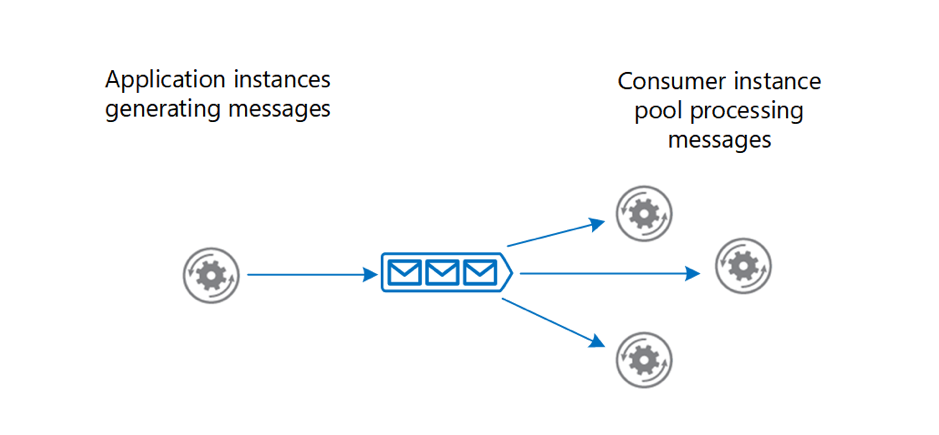
Load leveling
The volume of messages generated by the producer or a group of producers can be variable. At times there might be a large volume causing spikes in messages. Instead of adding consumers to handle this work, a message broker can act as a buffer, and consumers gradually drain messages at their own pace without stressing the system.
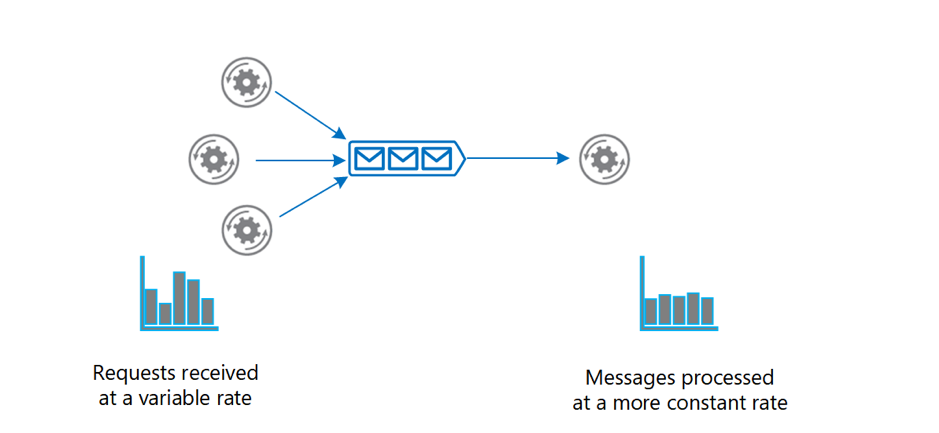
Reliable messaging
A message broker helps ensure that messages aren’t lost even if communication fails between the producer and consumer. The producer can post messages to the message broker and the consumer can retrieve them when communication is re-established. The producer isn’t blocked unless it loses connectivity with the message broker.
Resilient messaging
A message broker can add resiliency to the consumers in your system. If a consumer fails while processing a message, another instance of the consumer can process that message. The reprocessing is possible because the message persists in the broker.
Technology choices for a message broker
Azure provides several message broker services, each with a range of features.
Azure Service Bus
Azure Service Bus queues are well suited for transferring commands from producers to consumers. Here are some considerations.
Pull model
A consumer of a Service Bus queue constantly polls Service Bus to check if new messages are available. The client SDKs and Azure Functions trigger for Service Bus abstract that model. When a new message is available, the consumer’s callback is invoked, and the message is sent to the consumer.
Guaranteed delivery
Service Bus allows a consumer to peek the queue and lock a message from other consumers.
It’s the responsibility of the consumer to report the processing status of the message. Only when the consumer marks the message as consumed, Service Bus removes the message from the queue. If a failure, timeout, or crash occurs, Service Bus unlocks the message so that other consumers can retrieve it. This way messages aren’t lost in the transfer.
Message ordering
If you want consumers to get the messages in the order they are sent, Service Bus queues guarantee first-in-first-out (FIFO) ordered delivery by using sessions. A session can have one or more messages.
Message persistence
Service bus queues support temporal decoupling. Even when a consumer isn’t available or unable to process the message, it remains in the queue.
Checkpoint long-running transactions
Business transactions can run for a long time. Each operation in the transaction can have multiple messages. Use checkpointing to coordinate the workflow and provide resiliency in case a transaction fails.
Hybrid solution
Service Bus bridges on-premises systems and cloud solutions. On-premises systems are often difficult to reach because of firewall restrictions. Both the producer and consumer (either can be on-premises or the cloud) can use the Service Bus queue endpoint as the pickup and drop off location for messages.
Topics and subscriptions
Service Bus supports the Publisher-Subscriber pattern through Service Bus topics and subscriptions.
Azure Event Grid
Azure Event Grid is recommended for discrete events. Event Grid follows the Publisher-Subscriber pattern. When event sources trigger events, they are published to Event grid topics. Consumers of those events create Event Grid subscriptions by specifying event types and an event handler that will process the events. If there are no subscribers, the events are discarded. Each event can have multiple subscriptions.
Push Model
Event Grid propagates messages to the subscribers in a push model. Suppose you have an event grid subscription with a webhook. When a new event arrives, Event Grid posts the event to the webhook endpoint.
Custom topics
Create custom Event Grid topics, if you want to send events from your application or an Azure service that isn’t integrated with Event Grid.
High throughput
Event Grid can route 10,000,000 events per second per region. The first 100,000 operations per month are free.
Resilient delivery
Even though successful delivery for events isn’t as crucial as commands, you might still want some guarantee depending on the type of event. Event Grid offers features that you can enable and customize, such as retry policies, expiration time, and dead lettering.
Azure Event Hubs
When working with an event stream, Azure Event Hubs is the recommended message broker. Essentially, it’s a large buffer that’s capable of receiving large volumes of data with low latency. The data received can be read quickly through concurrent operations. You can transform the data received by using any real-time analytics provider. Event Hubs also provides the capability to store events in a storage account.
Fast ingestion
Event Hubs are capable of ingesting millions of events per second. The events are only appended to the stream and are ordered by time.
Pull model
Like Event Grid, Event Hubs also offers Publisher-Subscriber capabilities. A key difference between Event Grid and Event Hubs is in the way event data is made available to the subscribers. Event Grid pushes the ingested data to the subscribers whereas Event Hub makes the data available in a pull model. As events are received, Event Hubs appends them to the stream. A subscriber manages its cursor and can move forward and back in the stream, select a time offset, and replay a sequence at its pace.
Partitioning
A partition is a portion of the event stream. The events are divided by using a partition key. For example, several IoT devices send device data to an event hub. The partition key is the device identifier. As events are ingested, Event Hubs move them to separate partitions. Within each partition, all events are ordered by time.
Event Hubs Capture
The Capture feature allows you to store the event stream to Azure Blob storage or Data Lake Storage. This way of storing events is reliable because even if the storage account isn’t available, Capture keeps your data for a period, and then writes to the storage after it’s available.
We hope this quick start guide helps you get stated on azure messaging and event driven architecture.
Share this:

CloudIQ is a leading Cloud Consulting and Solutions firm that helps businesses solve today’s problems and plan the enterprise of tomorrow by integrating intelligent cloud solutions. We help you leverage the technologies that make your people more productive, your infrastructure more intelligent, and your business more profitable.
LATEST THINKING
INDIA
Chennai One IT SEZ,
Module No:5-C, Phase ll, 2nd Floor, North Block, Pallavaram-Thoraipakkam 200 ft road, Thoraipakkam, Chennai – 600097
© 2023 CloudIQ Technologies. All rights reserved.

